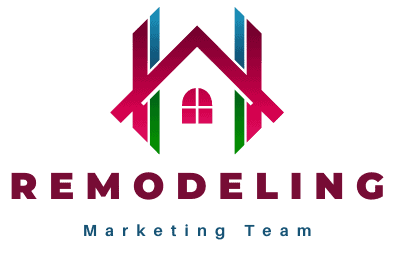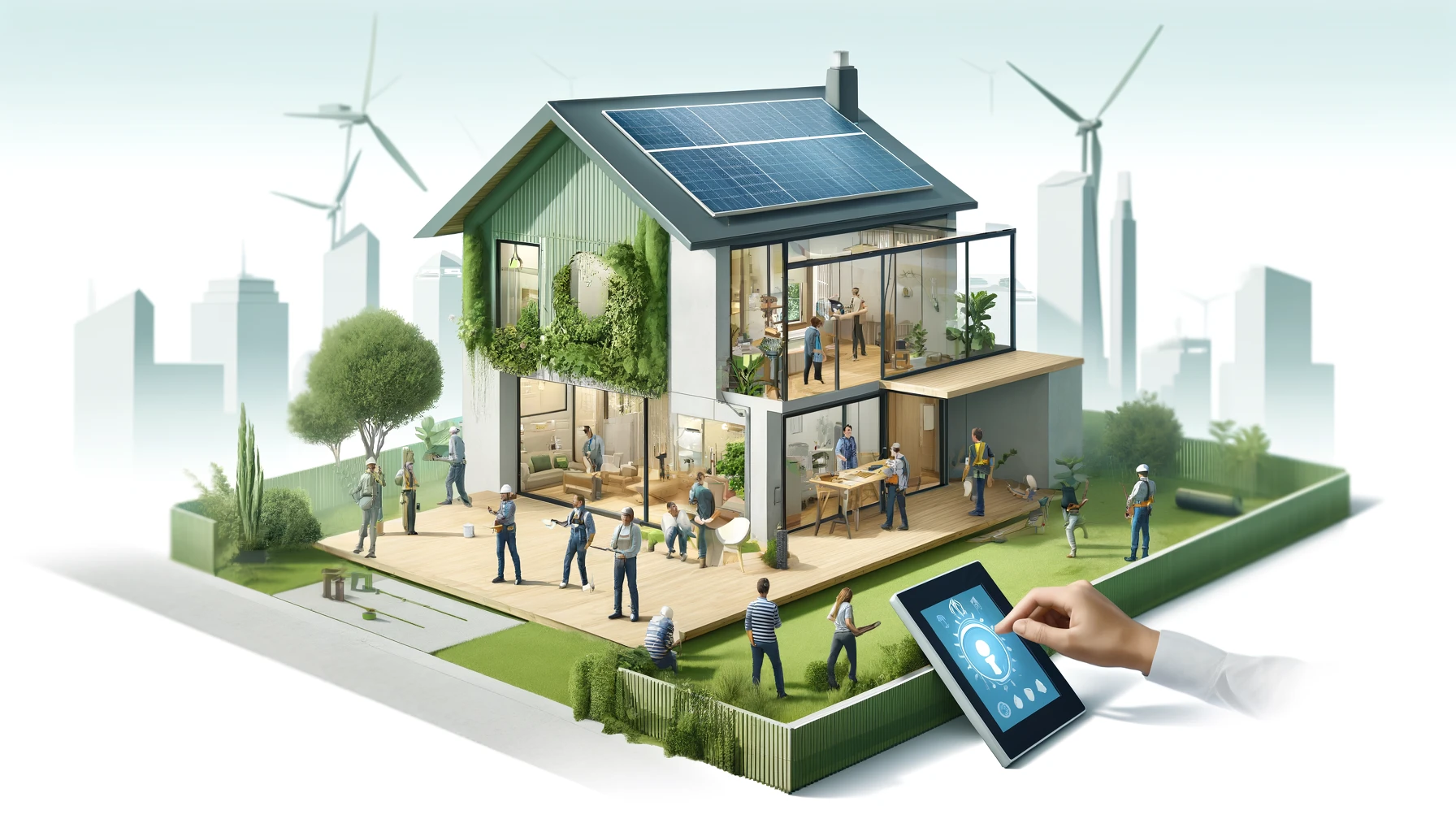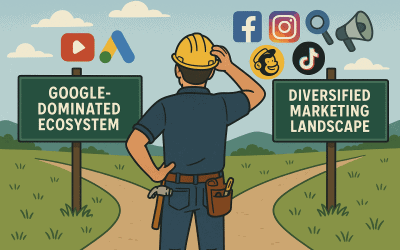As the home construction sector continually evolves, remodeling businesses face a critical need to adapt and innovate. This article delves into the importance of embracing new ideas, techniques, and technologies in the remodeling industry, and how a commitment to continuous learning can distinguish your business from the competition.
Key Takeaways: Innovating in the Remodeling Industry
- Embrace Technological Advancements: Integrating modern technologies such as 3D modeling, project management software, and virtual reality can significantly enhance operational efficiency, improve client satisfaction, and streamline project management from inception to completion.
- Prioritize Sustainability: Incorporating sustainable practices and materials not only meets the increasing consumer demand for eco-friendly options but also positions your company as a responsible and forward-thinking leader in the industry.
- Adopt Smart Home Solutions: Utilizing IoT devices and smart technologies in projects can significantly add value to your remodels, making homes more functional, energy-efficient, and appealing to tech-savvy consumers.
- Cultivate Continuous Learning: Develop a culture of education within your company by encouraging ongoing training and certifications. This keeps your team up-to-date on the latest industry trends and techniques, fostering innovation.
- Network Extensively: Engage with peers through conferences and seminars to gain insights, discover new tools, and explore collaborative opportunities. Learning from other industries can also introduce innovative practices that can be adapted to remodeling.
- Experiment Strategically: Test new methods and technologies on small-scale projects to evaluate their impact before wider implementation. This approach minimizes risk while proving concepts in real-world settings.
- Implement Efficient Resource Management: Adopt practices like just-in-time inventory to minimize waste and reduce overhead costs, leveraging these efficiencies to offer competitive pricing or invest in further innovation.
- Regularly Audit Technology Use: Ensure that all technological tools are the best fit for your company’s needs and are being utilized effectively to yield maximum benefits.
- Foster an Environment of Innovation: Encourage a company-wide ethos of experimentation and openness to new ideas. This can lead to significant advancements in how remodeling projects are approached and completed.
Introduction
The remodeling industry is influenced by rapid shifts in consumer preferences, regulatory environments, and technological advancements. For businesses within this sector, innovation is not merely a buzzword but a fundamental strategy for growth and sustainability. By leading with innovative practices, businesses can improve their operational efficiency, cater to sophisticated consumer demands, and enhance their market positioning.
The Imperative of Innovation
Innovation in remodeling involves more than the latest gadgets and gizmos; it encompasses a holistic approach to rethinking how every aspect of the business operates—from project management to client interactions and beyond. Here we explore several areas where applying innovative thinking is crucial:
Enhancing Efficiency and Quality
Digital Integration: Modern software solutions, like 3D modeling and advanced project management tools, can transform the traditional workflows of remodeling projects. For example, using Building Information Modeling (BIM) software allows for creating detailed digital representations of the physical and functional characteristics of a space. This can help in detecting potential issues early, planning logistics, and communicating clear, actionable insights to construction teams and clients.
Automation: Implementing automated solutions in areas like customer relations management (CRM) and inventory control can free up valuable resources and reduce human error. Automation ensures that materials are ordered, scheduled, and delivered efficiently, which minimizes downtime and accelerates project completion.
Meeting Evolving Consumer Expectations
Customization: Today’s clients expect services that cater specifically to their needs. Customizable design interfaces that allow clients to visualize different options and make real-time adjustments can significantly enhance customer satisfaction and engagement.
Sustainability: An increasing number of consumers prefer environmentally friendly solutions. Remodeling businesses that innovate by incorporating sustainable practices and materials not only appeal to this demographic but also contribute to broader environmental conservation efforts.
Smart Home Technology: Integrating IoT devices and smart home solutions into remodeling projects can significantly increase a property’s value and appeal. Innovations such as smart thermostats, lighting, and security systems are becoming standard expectations for many homeowners.
Reducing Costs
Efficient Resource Management: Innovative approaches like just-in-time (JIT) inventory systems can reduce overhead costs associated with material storage and waste. By receiving materials only as they are needed, businesses can streamline their operations and reduce financial outlay.
Renewable Energy: Incorporating renewable energy sources like solar panels during a remodel can reduce long-term energy costs for clients. This not only makes projects more attractive from a cost-saving perspective but also enhances the brand’s reputation as a forward-thinking, environmentally responsible business.
The Role of Continuous Learning
Creating a culture of continuous learning within a remodeling company is vital to sustaining innovation. Below are some strategies to embed learning into the core of your business operations:
Educational Opportunities
Continuous Training: Regular training sessions, whether on-site or through digital platforms, should be mandatory. Covering topics from new construction methods and materials to updates in regulations can keep your staff knowledgeable and ready to apply the latest industry standards.
Networking with Peers
Collaborative Learning: Attending industry conferences and workshops not only provides insights into current trends but also opens up avenues for collaboration. Networking can lead to partnerships that combine different strengths and specialties, catalyzing innovation.
Learning from Other Industries
Cross-Industry Insights: Often, breakthroughs come from transferring knowledge from one field to another. For instance, adopting lean manufacturing techniques from the automotive industry can optimize supply chain management in remodeling projects, significantly reducing waste and improving project timelines.
Hypothetical Scenarios: Illustrating Innovation in Action
Virtual Reality (VR) Usage: Imagine a remodeling company that employs VR to help clients envision their projects during the planning phase. Clients can “walk” through their future kitchen or bathroom, choose colors, finishes, and fixtures, and see the effects of different lighting setups. This not only enhances the client experience but also helps in accurately capturing client preferences, reducing rework.
Eco-Friendly Remodels: Consider a scenario where a company specializes in green remodeling by using sustainable materials like recycled glass countertops and bamboo flooring. They also install high-efficiency HVAC systems that significantly lower the homeowner’s energy bills. Such innovations attract environmentally conscious consumers and can set a company apart from competitors who do not offer these options.
Action Steps for Embracing Innovation
- Regular Technology Audits: Conduct bi-annual reviews of your technological tools and systems to ensure they are the best fit for your needs and are being utilized effectively.
- Promote a Learning-Driven Environment: Offer incentives for employees who pursue further education or certifications in emerging technologies or sustainable practices.
- Experiment and Pilot: Allocate resources to test new methods and tools on small-scale projects before wider implementation. This reduces risk and provides tangible case studies for the business.
Conclusion
Innovation in the remodeling industry means more than just adopting the latest technologies—it requires a fundamental reevaluation of how to meet customer needs and optimize operational efficiency. By fostering a culture of continuous learning and openness to new ideas, remodeling businesses can not only keep pace but lead in a highly competitive market. Embrace these strategies, and watch your business not only grow but become a benchmark for excellence in the remodeling industry.
FAQs: Embracing Innovation in the Remodeling Industry
What does innovation in the remodeling industry involve?
Innovation in remodeling goes beyond adopting the latest gadgets. It encompasses integrating advanced technologies, sustainable practices, and efficient processes to enhance operational efficiency, improve customer satisfaction, and reduce costs. This includes everything from using 3D modeling and project management software to incorporating eco-friendly materials and smart home technologies.
Why is it important for remodeling companies to adopt new technologies?
Adopting new technologies can help remodeling companies streamline their operations, enhance the accuracy of their project plans, reduce waste, and improve communication among team members and clients. Technologies like virtual reality can also enhance customer engagement and satisfaction by allowing clients to visualize their projects before construction begins.
How can sustainability be integrated into remodeling projects?
Sustainability can be integrated by using eco-friendly materials such as recycled glass countertops or bamboo flooring, employing energy-efficient systems like solar panels, and designing buildings to have a minimal environmental impact. This approach not only appeals to environmentally conscious consumers but also contributes to global conservation efforts.
What are the benefits of smart home technology in remodeling?
Smart home technology, including IoT devices like smart thermostats, lighting systems, and security features, adds functionality and value to homes. These technologies make homes more energy-efficient, secure, and comfortable, and appealing to a market segment that values tech-savvy solutions.
How does continuous learning benefit a remodeling business?
Continuous learning ensures that staff are up-to-date with the latest industry standards, technologies, and practices. It fosters a culture of innovation and adaptation which is crucial in a rapidly evolving industry like remodeling. Regular training and professional development can also enhance job satisfaction and employee retention.
Why is networking important for innovation in remodeling?
Networking with industry peers at conferences and seminars provides valuable insights into emerging trends, new technologies, and effective business practices. It also opens opportunities for collaborations that can bring in new ideas and approaches, vital for staying competitive and innovative.
What are some practical steps remodeling companies can take to innovate?
Remodeling companies can start by conducting regular technology audits to ensure they are using the best tools available. They should also encourage a culture of learning, experiment with new methods on small projects, and adopt efficient resource management practices. Engaging with wider industry events and learning from other sectors can also spark innovative ideas.
How can remodeling companies minimize the risks associated with adopting new technologies?
To minimize risks, companies can pilot new technologies on smaller projects to assess their impact and effectiveness before broader implementation. This step-by-step approach allows companies to manage their investments wisely and make adjustments based on real-world feedback.
This article is a collaboration between Carl Willis and OpenAI’s ChatGPT. Created on April 19, 2024, it combines AI-generated draft material with Willis’s expert revision and oversight, ensuring accuracy and relevance while addressing any AI limitations.






